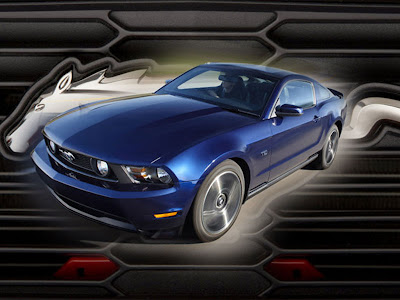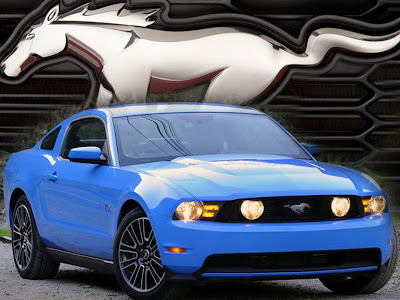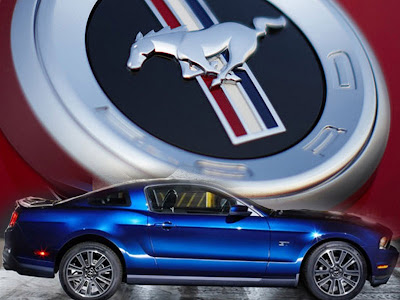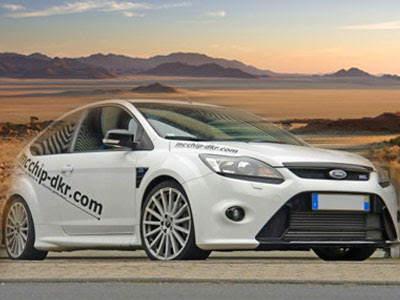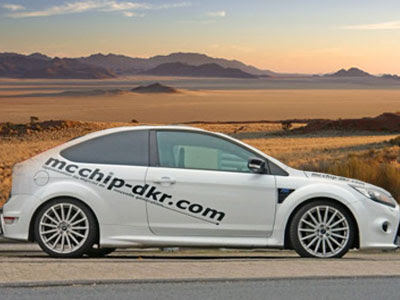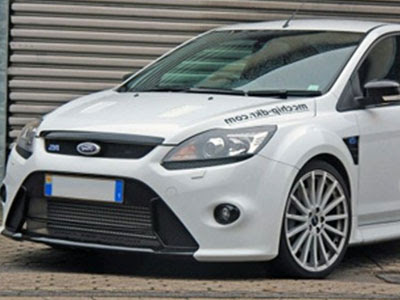
Ford took the occasion of the world’s foremost showcase of automotive splendor, the Pebble Beach Concours d’Elegance, to unveil the Ford Shelby GR-1 concept, calling the new sports car a salute to “performance art.”

The Ford Shelby GR-1 is a uniquely emotional American sports car design that makes a bold statement about Ford’s performance future.
“The Ford Shelby Cobra concept was a small step in our plans for the Ford GT supercar architecture and our relationship with Carroll Shelby,” says J Mays, Ford Motor Company group vice president of Global Design. “And the Ford Shelby GR-1 is a giant leap toward the future.”
The GR-1 concept takes the performance car genre in a new direction combining modern sculptured surfaces in a sleek muscular fastback design. The result is a forward-looking supercar with attention grabbing Ford presence and Carroll Shelby inspiration.
The Ford Shelby GR-1 is a front-engined, two-seat, fastback supercar that is based on the architecture of the Ford GT.
Ford and Carroll Shelby
More than 42 years after their original agreement to produce performance cars, Ford Motor Company and Carroll Shelby are back together producing production and concept cars. Shelby, a former race car driver and creator of numerous collectable performance cars returned to collaboration with Ford in the design of the 2005 Ford GT, which goes on sale this summer.
Shelby worked closely with the Ford Design team and Advanced Product Creation group to develop the Ford Shelby Cobra concept car. In addition, Shelby will produce a high-performance, limited edition, Shelby Ford Expedition, for sale through select dealers next year.

Racing inspired and wholly modern in design, this show car builds on the success of the Ford Shelby Cobra concept – the 2004 North American International Auto Show (NAIAS) “Best in Show” winner – and reinforces Ford’s on-going commitment to performance excellence.
The Ford Shelby GR-1 concept is a sinewy, athletic design with a dramatic front engine proportion. The long hood blends seamlessly into the teardrop-shaped cabin while the dramatic fenders dart rearwards into curvaceous haunches thrusting the car forward and enhancing the aggressive stance and width.
The car looks as if it is in motion, even when standing still. The optimized wheel arches and compact overhangs define the dramatic proportion while the sensual surfaces express the car’s athletic nature. A chiseled physique is achieved with sheer and full surfaces working together, interfacing one another in harmonious lines such as the strong shoulder line orbiting the car’s form.
The front of the GR-1 is dominated by an impressive air intake aperture and air flow splitter, directing cooling air into the engine bay and wheel wells, while air vents on the top surface of the hood exhaust hot air from the radiator.
The V10 engine pushes unashamedly upwards into the hood’s surface exposing prominent bulges – a potent reminder of the car’s powerful performance – while air vents at the base of the front screen allow the motor to breathe. Intakes and vents perforate the body side and Kamm tail, further exhausting hot air out of the vehicle.

The front corners of the GR-1 are dominated by the front wheel well and trapezoidal HISS (high intensity solid state) and LED headlamps. The distinctive Kamm tail, a strong concave section, is further defined by the bold vertical tail lights at the rear.
A visor-like side glass graphic gives a hint of the dramatic motion of the butterfly-hinged doors.
The race-inspired, ultimate high performance, Ford Shelby GR-1 is the next chapter in a long line of emotionally-charged Ford supercar concepts.
Building Another Showstopper
Ford worked closely with Carroll Shelby to develop the Ford Shelby Cobra concept for the 2004 North American International Auto Show. The show car was the brainchild of Ford’s Advanced Product Creation Group, engineered in Michigan and designed in California, a partnership which is charged with developing future car concepts and technologies with an eye toward production possibilities. The group used the Ford GT architecture and fully engineered the Ford Shelby Cobra concept. For demonstration purposes, two chassis were ordered for the Cobra concept, but only one show car was built.
Before body panels were even created, the fully-operational running chassis was test-driven at high speeds at Ford’s Dearborn Proving Ground. So pleased were Ford officials with the concept’s chassis that they took the extra demonstration chassis and went to work on another concept before the Ford Shelby Cobra concept was unveiled in January.
The Ford Shelby Cobra and its predecessor, the Ford GT were hits of the two previous North American International Auto Shows. The Ford Design team was challenged to follow-up with another exciting concept.

The Designer
In the Irvine Advanced Design Studio, George Saridakis, a young designer, new to Ford in 2000, was known for his contributions in executing the details of some of Ford, Lincoln and Mercury’s latest production and concept designs.
Saridakis created a sketch that caught the attention of the Irvine team and resonated with Mays.
“George produced this completely resolved sketch – the best I’ve seen in 10 years,” says Mays. “When I saw it, it wasn’t a matter of ‘Let’s do more sketches.’ It was really more of a ‘Let’s get this into clay.’”

Remarkably, only the original sketch of the car, in three perspectives, was created.
“George nailed it in one crack,” Mays opines. “This is a designer so masterful at visualizing every aspect of the car and its story that it literally flowed out of his pen. And because the design is so pure, we really believe this show car will be a hit.”

Width 74.6 (1834mm)
Height 46.0 (1168mm)
Wheelbase 100 (2540mm)
Track Front 63.0 (1598mm)
Track Rear 61.3 (1558mm)
Front Overhang 35.6 (903mm)
Rear Overhang 38.2 (970mm)
Min. Ground Clearance 5.9 (150mm)
Curb Weight 3900 lbs est.
Tire Size 275/40/R19 front 345/35/R19 rear
Engine Ford 6.4L V10
Max RPM 7500RPMHorsepower 605 @ 6750RPM
Torque 501lb/ft @ 5550RPM
Transmission 6-speed transaxle with LSD
Final Drive Ratio 3.36:1


























